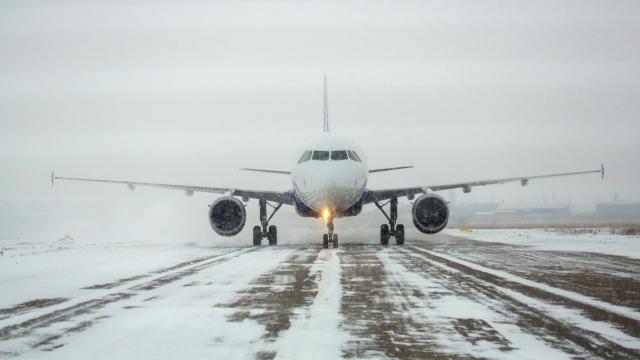The holidays are a notoriously difficult time to travel by plane, in part because of the number of people trying to fly and in part because of the increased likelihood of winter weather. Snowstorms and icy runways can quickly derail days’ worth of air travel.
But while you can’t plan for every contingency or know what the weather will be when you book your flights, you can help minimise potential disruptions with some smart scheduling.
Why you should pick an early flight
In general, experts recommend booking an early flight, as delays and cancellations stack up over the course of a day. Since passenger flights don’t generally take off overnight, airlines have some downtime to prepare for future (or manage existing) scheduling chaos. Catching a morning plane may minimise the likelihood of getting caught in a domino of delays. And if your early flight is cancelled, you have more options for same-day departures than those scheduled to leave in the evening.
Be prepared for even the first flight out in the morning to run a little bit behind though, as de-icing is often required after a plane has been sitting overnight and has built up frost or snow. It may still make sense to take the earliest flight, as most later planes taking off in winter conditions will have to de-ice anyway, and these operations aren’t necessarily first-come-first-served.
Fly direct when possible, even if that means driving farther
While getting a direct flight isn’t always feasible if you’re travelling between smaller cities, it’s perhaps the best way to minimise disruptions. You only have to depend on the path of one plane, and there’s no risk of missing connections due to delays or losing checked bags somewhere en route. Direct flights can certainly be late or cancelled, but the overall experience is likely to involve less time and frustration than if you have two or more planes to catch.
If you live within a few hours of a major hub, it may even be worth driving to the larger airport to catch a direct flight — weighing the total time and cost against the probability of delays, of course.
Choose your connections carefully
If you can’t get a direct flight, don’t simply default to the fastest or cheapest itinerary. Consider flying a more southern route, where the likelihood of snow and ice is smaller.
Of course, this isn’t an exact science either. While northern airports may be more likely to get hit with winter storms, they’re also better prepared to deal with the impact and keep things moving. Even a little bit of snow can paralyse an airport that rarely sees winter weather.
Plus, the airports your flight visits before you board also matter. Even if you’re flying through sunny Texas, your plane may be coming from snowy Minnesota. That unfortunately isn’t in your control, and it takes a lot of research to figure a flight path out ahead of time.
You may consider connecting through or terminating at smaller airports (or secondary airports in major cities) that have lower volumes of passengers and flights. It may also pay off to have a slightly longer connection time in case your first flight is delayed or has to de-ice.
Be aware of alternate itineraries if the weather is bad
Know the weather before you go, and know what alternative itineraries exist. If you expect to be affected by cancellations, you may be able to get ahead of it by rescheduling with your airline (rather than waiting until every other stranded passenger is trying to do the same thing). Of course, know that weather is unpredictable, airline staff are extremely busy during these times, and there are only so many flights with so many seats heading to your destination. Preparedness and patience are key.

Leave a Reply
You must be logged in to post a comment.